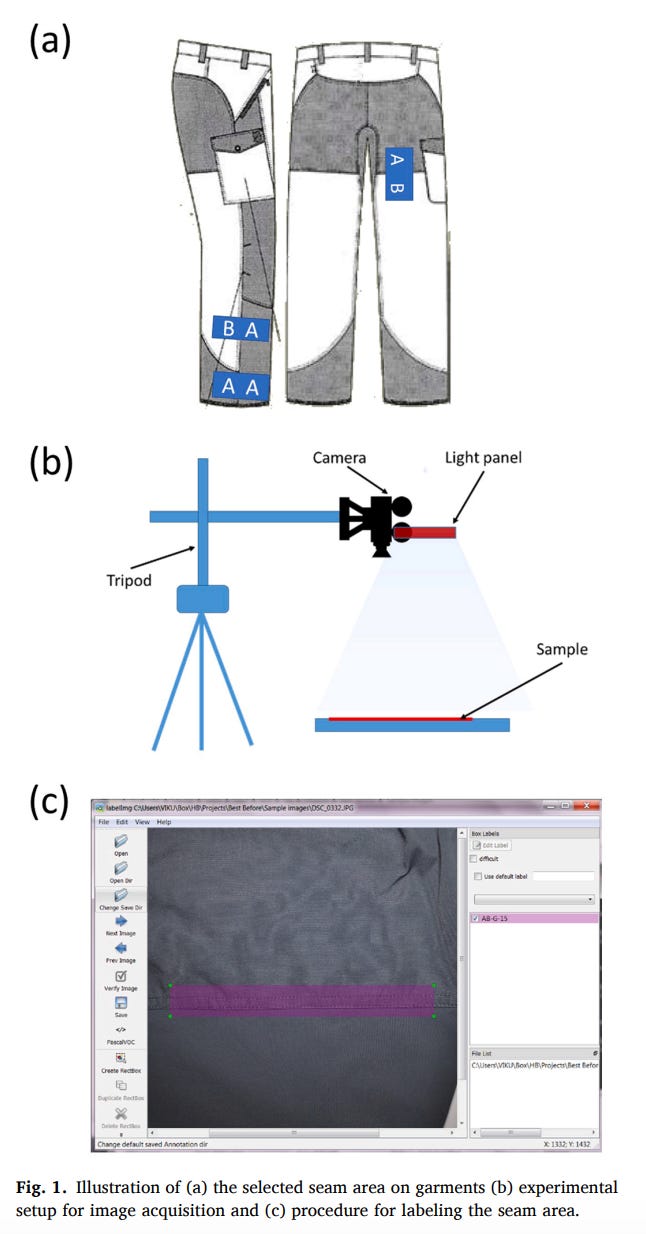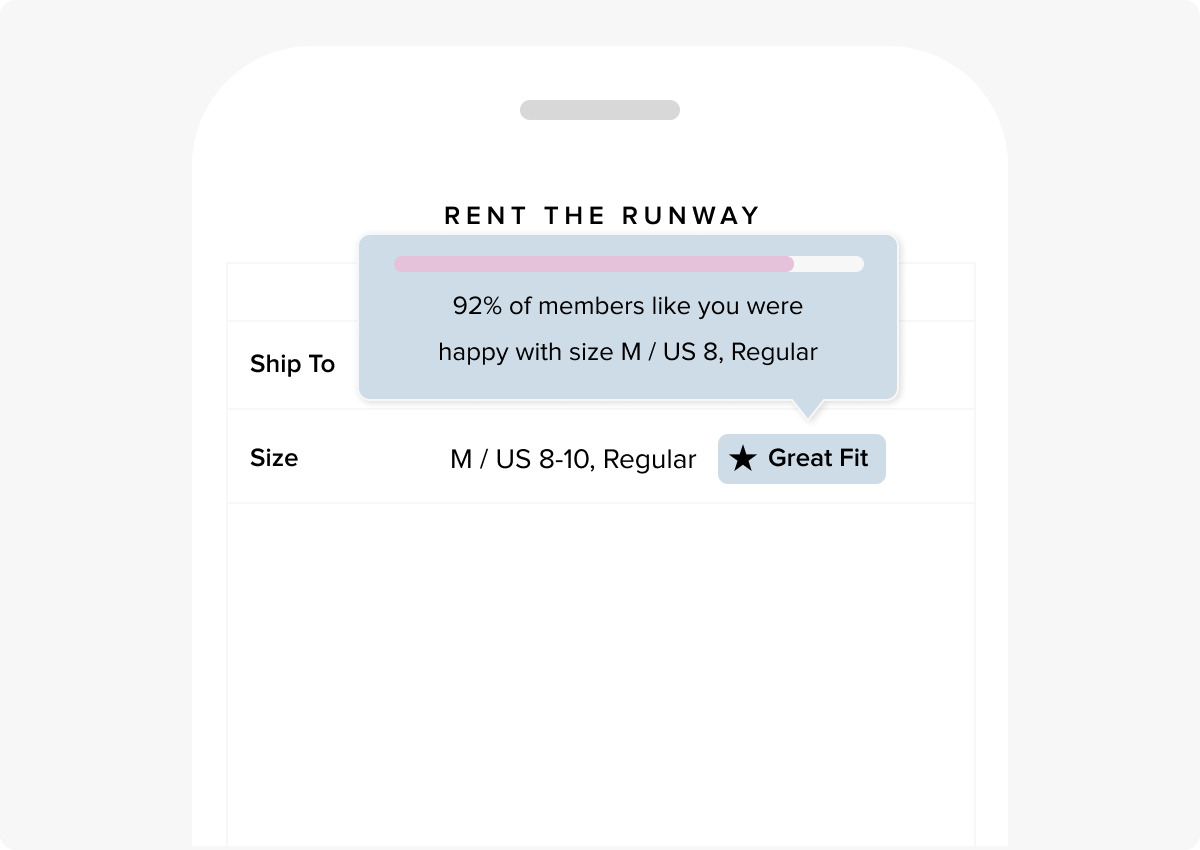If the dress fits!
How the fashion industry can use data science to make the world more sustainable.
Today we’re talking about how data science can be used to help clothes you rent online fit correctly the first time. With the rise of Rent the Runway, Fashion Pass, and other clothing rental subscription services, making sure the dress fits is quite a valuable business.
Data science is fashionable.
Jennifer Hyman, Rent the Runway’s CEO, sat down with Reid Hoffman to talk about how RTR has been “designed by data” since their start in 2009. During their discussion, Hyman shared how their vision of democratizing fashion drove much of their iterative success, and that listening to feedback was at the crux of many decisions. Hyman also dove into how the company takes a data-driven approach to driving a return on their investments.
Hyman discusses the processes at RTR that have been improved thanks to data. Hyman’s goals with using data focused on increasing the return on investment from RTR’s two money makers — the clothes in inventory and the acquisition and satisfaction of customers. Things haven't slowed down since. I’m going to share some interesting research that reveals how data science can improve processes towards improving the longevity of apparel, based on a study from the textile field! Let’s dive in!
Fun fact! When returned to Rent the Runway, all garments first go through an x-ray machine to catch left-behind items like lipgloss or lotion. Don’t forget your valuables!
Improving turnover on clothes in inventory
To make a profitable clothing-sharing business, Hyman needed to increase the revenue RTR was able to make off a single garment.
What types of machine learning models helped get them there? In 2022, four Swedish researchers proposed a deep learning based system for garment visual degradation prediction. This research was motivated by efforts within the fashion industry to increase the sustainability of garments. In the past 15 years, garment production has doubled while a single piece of clothing is worn on average only 7 times before being discarded. After RTR implemented similar strategies, Hyman says they can “turn units upwards of 20 times a unit, and many cohorts more than that”.
Generative adversarial networks to analyze textiles
The researchers propose the use of a powerful framework for neural networks, known as a Generative Adversarial Network (GAN), to analyze degradation in textiles. To best describe the GAN, I’ll let Jason Brownlee do the talking:
A GAN is a generative model that is trained using two neural network models. One model is called the “generator” or “generative network” model that learns to generate new plausible samples. The other model is called the “discriminator” or “discriminative network” and learns to differentiate generated examples from real examples. — Jason Brownlee from Machine Learning Mastery
This framework is known to perform well on images, which made it conducive to use on high quality images of textiles and fabrics to identify patterns or potential problems in quality. Something unique this study needed to research was how time effected fabric. Databases such as DeepFashion contain static images to train existing GANs models, but to track performance of a model measuring degradation, you need time to let the textiles, well, degrade. The team studied seams on multiple pairs of trousers which then underwent wash cycles and were photographed several times throughout this process to create time-dependent images of textiles.
The research concluded with successful improvements to existing garment visual degradation processes. If these models can tell us more about how quickly clothes degrade, how can a clothing rental platform use this analysis to drive revenue?
Analyze the lifespan of an item before purchasing a large inventory to be able to better forecast the margins of a single item.
Knowing the lifespan of a product can also inform how to best care for a product in between rentals.
Deciding the value to charge in order to maintain profitability from an item based on its lifespan.
The power of user data
Rent the Runway is a great example for the power in user data, especially when it comes to explicit feedback that powers recommendations, among other types of models. In our series on recommendation models, we spoke about the difference between explicit and implicit feedback from a user.
TLDR: explicit feedback is directly provided by the user in response to a prompt from the system (i.e. a product rating on Amazon) versus implicit feedback is implied from the system (i.e if you only ever search for rom-coms on Netflix, they’ll likely recommend rom-coms more than other products).
Rent the Runway encourages explicit feedback from their users around the fit of an item, accuracy of photos, and more. This data is tremendously valuable. This feedback not only feeds into the models that can help recommend items for users, but also is a value add to earning and keeping customers, as they heavily rely on the reviews on a given item to know how it might fit and what it may look like in person.
This story exemplifies an interesting use case for data science I haven’t covered much so far at Day to Data — using data science to make more sustainable choices! I love that Rent the Runway and other clothing subscription services are using data science to increase the lifespan an article of clothing can have while being circulated between customers. Applications of data science that encourage companies to make changes that are more sustainable to their business and industry at large excite me.
References:
At the end of 2022, I attended a session at Dataiku’s NYC office with a data scientist from RTR and Dataiku talking about how RTR builds models and problem solves with data science. Much of this conversation informed this article and the learnings around how RTR uses data science.
Thanks for reading this week’s article! Next time you rent a clothing item that fits just right, say thank you to a data scientist (and the team that supports all those efforts!).






Can I rent dad jeans? :)